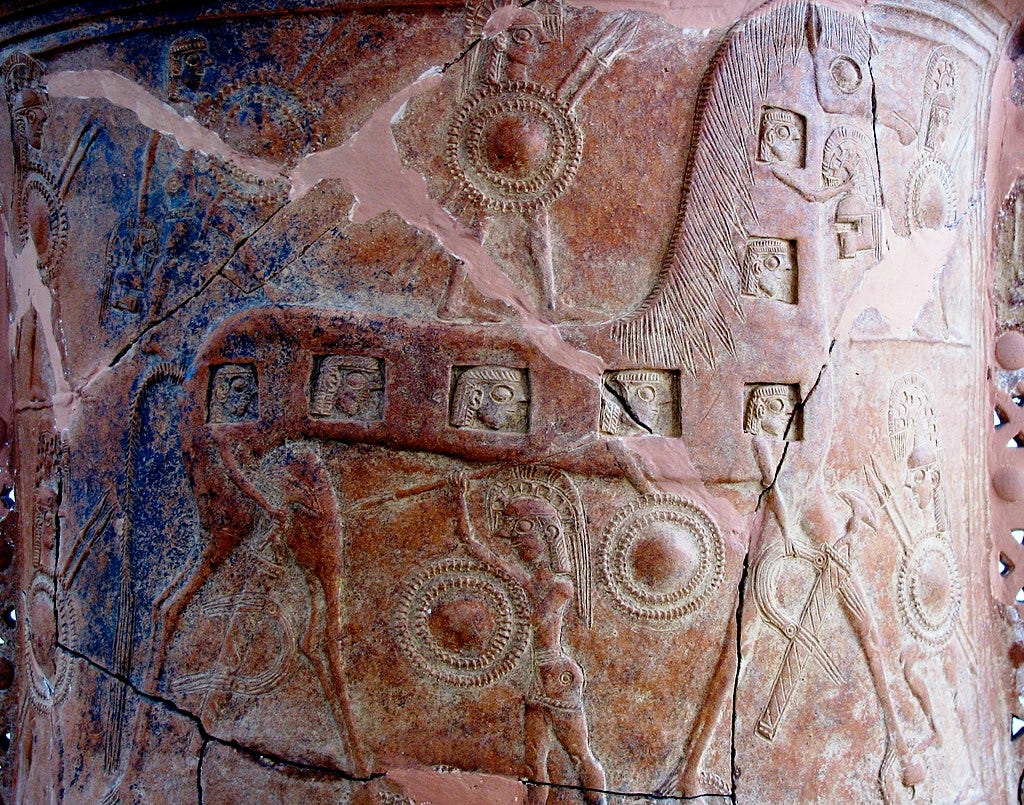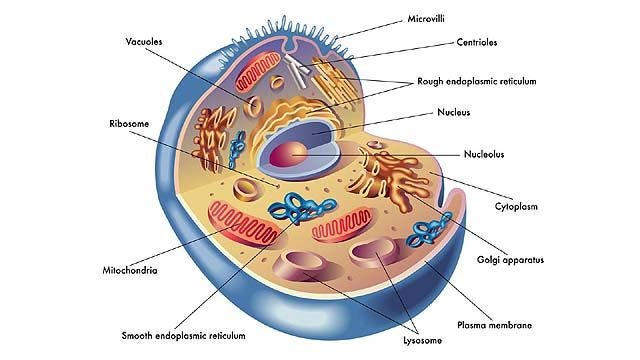Trojan Horse | The Problem with Gene-based Injections - Part 2
In Part 1 we discussed the interaction between injected genes and the immune response. Now, we turn to the risks these injections pose on the genome.
Summary of Part 1 - First Principles
In Part 1 of The Problem with Gene-based Injections, we discussed the fundamental principles underlying our understanding of cellular immunity.
Here is a summary of the argument that these injections induce an autoimmune response against the cells which fuse with the lipid nanoparticles (LNP) that carry the mRNA transcript encoding the Spike protein.
Spike-protein encoding genes are wrapped in lipid nanoparticles (LNP)
LNPs are injected into a human
LNPs enter the bloodstream
Bloodstream spreads LNPs throughout the body
Cells fuse with LNP & make the Spike protein - the antigen
Cells then present the antigen via MHC I → Train killer T-cells
Killer T-cells circulate around the body and destroy any cell that is presenting the Spike protein antigen
This is the critical final step:
Before your cells fused with LNPs, they were healthy
After vaccination, killer T-cells now perceive those healthy cells as infected - requiring destruction
This is the definition of an autoimmune response - the host immune system turns on its own healthy cells.
Unfortunately for us, this is just one of the consequences of these injections…
The Trojan Horse
During the Trojan War, Odysseus had a clever plan. They would build a giant wooden horse with the inscription:
The Greeks dedicate this thank-offering to Athena for their return home.
The horse was filled with Greek soldiers, and the remainder of the Greek camp was deserted. The Trojans believed that they had won, and brought the horse home. The Trojans were slaughtered in their sleep.
Lipid Nanoparticles
To review, the aforementioned injections contain an RNA sequence which encodes the SARS-CoV-2 chimeric Spike protein. This RNA sequence is modified, and encased by lipid nanoparticles (LNPs) - fancy talk for nanometer-sized bubbles of lipids.
One of the most significant obstacles in gene-therapy is a delivery system. You cannot just rub genes on a person’s skin, or give them a pill to swallow, and hope the genes makes it inside the target cells without degradation.
Lipid-based delivery systems have proven to be an effective mechanism in delivering chemicals, proteins, and gene-sequences to cells & tissue. LNPs serve two functions:
Protect the payload while it reaches the target tissue
Seamless fusion of LNPs with cell walls (also lipid bi-layers) to deliver the payload
However, the challenges do not end there. These LNPs have their own weaknesses which ultimately affects their degradation by the host cells.
Thus, several other modifications have been developed over the years to compensate for this, including adding charges to the LNP (positive or cationic) and PEGylation (attaching a modified Polyethylene Glycol).
Pay careful attention to the above image. As this gene-containing particle enters the cell (cytoplasm), the cationic (positively-charged) lipids allow it to form a lipid bi-layer that stabilizes the payload from the destructive forces inside the cell. The manufacturers will tell you that this is merely to protect the RNA, so it can get to the ribosomes and be transcribed into proteins. But, the cell is far more dynamic and complex.
It will not just do what we want it to do.
Before we go any further, we need to keep track of the components involved:
Gene-sequences
PEGylated lipids
Cationic lipids
The following is a list of the ingredients in the vaccines:
Comirnaty/Pfizer
PEGylated lipid → ALC-0159
Cationic Lipid → ALC-0315
Moderna
PEGylated Lipid → PEG2000 DMG
Cationic Lipid → SM-102
Why these Lipids matter
You may be thinking that this is all kosher, nothing to be concerned about. We want these genes to be safely delivered to the cells, so they actually have a therapeutic benefit.
Even if you could overlook the potentially hazardous effects of the stated objective - that’s not all it does.
Once you inject these LNPs into a human, you cannot control where they go, or what they do. This would be the equivalent of throwing a message-in-a-bottle into the ocean, with the hopes of it reaching someone far away - and having no other interactions. It’s delusional.
The above image should help you visualize all the machinery inside a human cell. The moment the LNP enters the cell, it has to avoid organelles & enzymes, and protect itself from the contents of the cytoplasmic fluid itself. The proposed target of the LNPs are the ribosomes and endoplasmic reticulum - which translate the RNA into proteins.
The target of gene-therapy is the nucleus - where the DNA of the cell is housed. These are typically at the core of the cell - far from the periphery.
To understand why these lipids matter, let’s look at why they were developed.
From Suh et al, 2003
Gene delivery to the cell nucleus has been implicated as the Achilles’ heel of gene therapy
Man-made delivery vectors suffer from lower efficiencies compared with nature’s DNA viruses
Transport of nonviral DNA carriers through the cytoplasm…is thought to be inefficient and potentially rate-limiting because of need for “random migration” to the nucleus
Polyethylenimine DNA nanocomplexes are among the most efficient…a quality often attributed to its cationic nature
From Suh et al, 2007
Surface-modification of delivery vehicles through PEGylation has shown promise as a method to improve the stability and performance of gene vectors
Cytoplasmic elements may pose obstacles to efficient intra-cellular transport of nanoparticles
PEGylation increased average nanoparticle diffusion by 100% vs unPEGylated particles in live cells
Once we understand the objectives & obstacles of gene-therapy, the terminology used in the research becomes clear:
Stabilization
Diffusion & Diffusivity
Perinuclear accumulation
Putting it all together
The injections being ‘offered’ to the population under the guise of protection from severe SARS-CoV-2, are not merely vaccinations.
These are gene-sequences which have been placed inside lipid nanoparticles designed to maintain its stability and integrity in bodily secretions, the bloodstream, and the intracellular fluid.
Whether or not you want to believe that these injections were designed exclusively for the production of Spike protein, is actually irrelevant.
What matters is that the design is identical to gene-therapy. These injections have the capacity to deliver patented chimeric genes into the nucleus of your cells. Once a sufficient amount of these genes accumulate in and around the nucleus, it is only a matter of time before one or more copies can integrate into your genome.
The Lipid Nanoparticle is the Trojan Horse
Spike-protein is the Greek Army
Your body is the City of Troy
Is there evidence for genetic fuckery?
Funny you should ask. Yes.
Jiang & Mei1 wanted to study the effects of SARS-CoV-2 on Adaptive Immunity (as discussed in Part 1). They found in vitro evidence that Spike protein inhibits the activity of proteins involved in DNA damage repair. Furthermore, they discovered that Spike protein localizes to the nucleus, and impairs proteins like BRCA1 - the dysfunction of which is considered a huge risk factor for breast cancer (hence BRCA).
This is probably one of the most important studies performed on Pfizer’s vaccine (BNT162b2). Alden et al2 experimented on human liver cells to see what happens to the mRNA introduced to the cells.
Their findings are astounding:
Altered expression of LINE-1 - an endogenous reverse transcriptase
BNT162b2 mRNA reverse transcribed into the DNA of the liver cell
Reverse transcription is a process by which RNA acts as a template to produce a complementary DNA (cDNA) strand. The cDNA can then be used to generate double-stranded DNA.
Therefore, exposure of liver cells to the ‘vaccine’ caused dysregulation of a reverse transcriptase, which ultimately resulted in the incorporation of BNT162b2 sequence into the native cell’s DNA!
This is textbook gene-editing.
The more I dig into this, the argument that these are unintended consequences of rapid vaccine development sound increasingly obtuse.
The figure below is from Pfizer’s report (page 35) submitted to the Australian Department of Health, regarding BNT162b2 mRNA.
The far left column is a Hoechst stain - used to stain DNA blue. The column in green is staining for Spike protein. The merge column illustrates the overlap of Spike protein with cellular DNA localization.
Strange coincidence, I’m sure.
It gets weirder still…
This article was published on February 21st, 2022:
There’s a lot of technical mumbo-jumbo in the title, so let’s break it down.
Ambati et al wanted to explore the genetic make-up of SARS-CoV-2 Spike protein. To do this, they searched a database (BLAST) to see if there is any similarity between the Spike protein and other known proteins.
The basics:
SARS-CoV-2 genome is most similar to RaTG13 bat coronavirus (96.2%)
The key difference is 12-nucleotides (or 4 amino acids) in the Spike protein - PRRA
PRRA is within the Furin Cleavage Site - responsible for enhanced pathogeneticity, and the synthetic component of SARS-CoV-2
Alright, so we kind of knew this already from all the lab-leak information.
Here is where it gets weird…
This 12-base sequence in the virus, is a 100% complementary match to a patented technology (SEQ ID11652):
Who is Stephane Bancel? The CEO of Moderna, of course.
This proprietary sequence, ID11652, turns out to be a 100% match to human Mut S Homolog 3 (MSH3). MSH3 is yet another DNA mismatch repair protein.
The authors found no other match.
In Summary:
SARS-CoV-2 Spike protein contains an artificial sequence which is a 100% match to a patented technology, which encodes a human DNA mismatch repair protein.
Need I say more?
Implications
There are several physiologic, pathologic, and ethical considerations here.
Why are we injecting people with genes that disrupt DNA repair?
Will these disruptions lead to cancers? If so, at what rate?
How was a private company allowed to patent a sequence identical to a human protein? Or indeed any living protein? It is illegal.
Was the fact that this sequence is also a match for a synthetic sequence, the loophole that allowed it to occur?
On what basis are we allowed and encouraged to call these vaccines?
Why are we injecting children with this?!
The long-term consequences are unknown & uncertain.
UPDATE: Academic medicine is finally catching on…
The arrogance of man knows no bounds. The potential damage is likewise unlimited.
Paid subscribers enjoy:
Easy to understand perspectives on common health concerns
Research summaries relevant to your health
Insights from real case studies
Free Insights Preview:



















Wow! You and Dr. Carrie Madej (who was the 1st that I know of who said this immediately) should be given SOME sort of award/medal! Although I know that’s not why you do what you do. But YOU really broke it down WITH the proof to back it up. Thank you sir! This should be front-line news on every channel but sadly it won’t be. Hopefully you won’t be silenced/threatened because there’s billions at stake here. God’s Speed and stay safe.
Articles like this really reassure me. I have sidelined my life for 2 years now to read/learn and research subject matter outside my pay grade. The passage of time has allowed people such as yourself to validate our justifiable reservations. We are in for a wild ride. Now moving straight on to financial and energy loggerheads too.